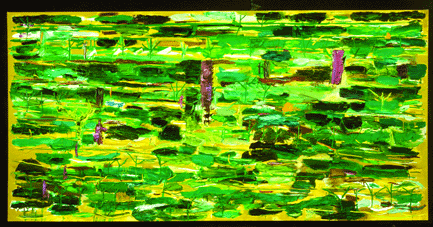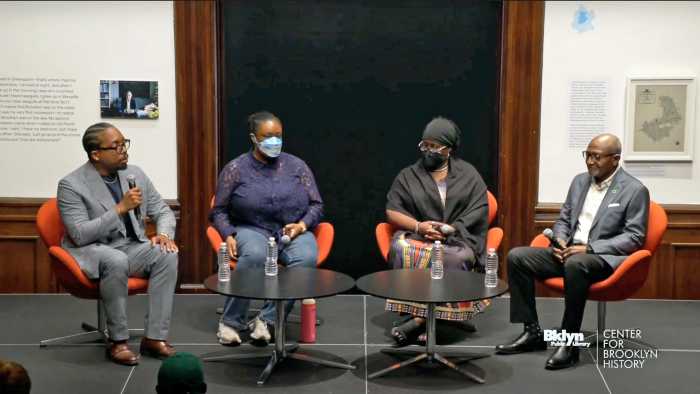From her earliest abstract work, Joan Snyder has honored her work’s physicality
Joan Snyder emerged in the late 1960s and early ’70s with a justly celebrated body of work. With works that quite nearly trespassed into an emotionally flavored abstraction, she brought the vitality of the physical act of painting back into dialogue among artists.
At the time, painting was in a period of increasing limitations as exemplified in the cold industrialization of Warhol and the rigid strictures of Minimalism as proscribed by painters such as Chuck Close and Jo Baer. Snyder along with other painters including Pat Steir and Elizabeth Murray made it acceptable to have a genuine interaction with the paint and to not just work slavishly from photographs or as an ideological sign painter.
Unfortunately, the six or seven paintings from this early period just kind of lie there in this exhibition. I am not sure if it is just a poor selection of representative works or if their influence has become so pervasive that the originals now look bland, even timid. Only in “Squares” do you begin to get a feeling of the dynamic involved in letting the grid—at that time sacrosanct––bleed.
Much is made in the exhibit’s wall texts of Snyder’s involvement with the feminist political movement, as evidenced by pieces such as “Flesh/Art” from 1973 where Snyder is not just painting but also cutting and sewing into the canvas, anthropomorphizing it, as though it were skin.
With her move out of New York City in the mid-1980s came a number of monumental paintings during the next decade that followed––“Sweet Cathy’s Song,” “Heart On,” “Beanfield with Music,” and “Moonfield,” this effort culminating in “The “Orchard/The Alter.” In these strong mature works, Snyder really mixed it up on great big canvases like no body else. “Beanfield with Music” is a classic work of richly colored greens and purples slathered on an orange ground, haunted by narrative. It could easily go toe-to-toe with works by Amselm Kiefer or any of the other Neo-Expressionists.
The late-1980s portion of this show features, by far, some of the weakest work on view. In an attempt to deal with big issues such as the Holocaust and AIDS, Snyder began to use photographic images as collaged materials and to write out poems in a painterly scrawl. Sadly, the paintings get lost for the reading of the poems, and the montages of concentration camp survivors never really move beyond that––no matter how much paint Snyder threw at them.
The universal angst suddenly seemed to have gotten very real for Snyder, as she and her companion Maggie Cammer each lost both of their parents over a short period in the mid 1990’s. As the show closes and these personal crises have passed, there has come a great re-flowering for Snyder. In densely colored, radiantly lush paintings such as “Cherry Fall,” “Green Flowers with Kaddish,” “And She is Always Searching for Beauty,” “Elegy,” “Perpetuo,” and “Wildflower/Field,” the tangible expression of spiritual acceptance edges toward the transcendent.
gaycitynews.com

































